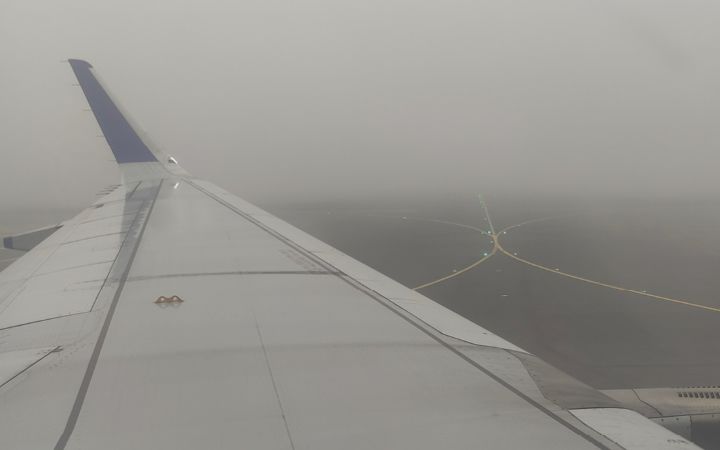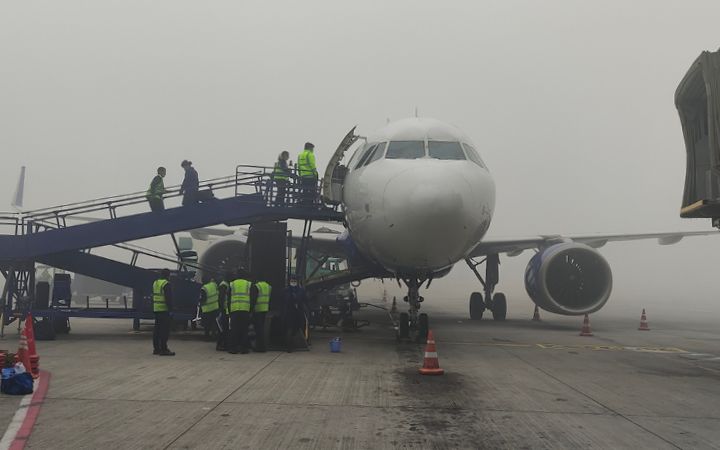Building resilience with aviation as critical infrastructure: From globalized economies to small island states
From global economies to small island states, land-locked countries, and hard to reach locations: aviation is a critical infrastructure for many countries. Investment in the resilience of aviation infrastructure is vital. Simple, yet effective resilience assessments can be done routinely (from data already being collected through aviation sector compliance) to protect critical aviation infrastructure from multiple natural and human-made hazards.
The multi-hazard perspective
Air travel is vulnerable to many types of hazards that cause disruption, loss, and damage and come in many shapes and forms: from geophysical forces (earthquakes) to hydro-meteorological volatility (extremes of floods, temperatures, and heavy winds) and system volatility (economy, supply chains, or geopolitics). With regular monitoring and a suitable early response, the risks from multiple hazards can be avoided and minimised by airports and airlines.
Airplanes and airports are already subject to a very high level of scrutiny and safety compliance. Yet uncertainty remains around how to prioritise and what more can be done.

Economic volatility—characterized by unpredictable changes in factors such as GDP growth, inflation rates, exchange rates, and commodity prices—can significantly impact aviation-related travel. This impact is felt through decreased consumer spending, reduced corporate travel budgets, financial strain on airlines, a decline in tourism, delayed infrastructure investments, and geopolitical uncertainties. For example, the global pandemic in 2020 and the ensuing economic disruption led to one of the most severe drops in aviation-related travel in history. It has taken nearly five years to recover.
For airlines, increasing extremes of temperature are also having an impact, with reduced engine performance and wing lift due to high temperatures forcing airlines to reduce their passenger and/or cargo payloads. By 2050, extreme heat could ground 23 times more airline passengers than in 2020.
Meanwhile, natural hazards may require airports to invest in specialized equipment or infrastructure to handle their vulnerability effectively, for example in the case of poor visibility. Dense fog is often an issue at airports where this equipment is lacking. The volcanic eruption of Eyjafjallajökull in Iceland caused days of disruption for airlines operating in Europe, until the air-space conditions were deemed safe for use by airliners.
Severe weather events caused major disruptions in 2024. Flash flooding at Barcelona, Chennai, and Dubai airports caused operational disruption within the airports themselves, as well as to the movement of hundreds of flights. Rising sea levels also threaten airport infrastructure, particularly in coastal and island locations such as The Bahamas, where airports often serve as critical lifelines both socially and economically.
The increasing reliance on complex IT systems in airport as well as airline operations has also highlighted a critical area of vulnerability in the face of technological disruptions. In July 2024, a global IT outage caused by a faulty update from a cybersecurity firm led to widespread disruptions across the aviation industry. In recent years, other IT outages forced major airlines to ground flights, resulting in over 7,000 cancellations and affecting approximately 1.3 million passengers.
Sufficient and reliable power and energy supply is vital for airport infrastructure, as even short outages can cascade into major disruptions. In March 2025, a fire at a power substation is believed to have forced Heathrow, one of the world’s busiest airports, to pause full operations for 16 hours, causing hundreds of cancellations and disrupting an estimated 270,000 passengers. Similarly, in April 2025, a power grid failure affected both Spain and Portugal, temporarily halting operations at multiple airports and impacting rail services and telecommunications across the Iberian Peninsula.
These incidents demonstrate the vulnerabilities that exist even in advanced economies and reinforce the need for airports to monitor, investigate, and appropriately invest in system resilience. Backup power systems, real-time monitoring, and rapid response protocols ensure vital operations continue during electrical outages.
Understanding the need for resilience in aviation
Keeping a multi-hazard approach is vital to ensuring that aviation infrastructure (including airports and airlines) can build comprehensive resilience.
Resilience planning and aviation are intertwined, with one reinforcing the other. Aviation sector disruption can have a severe impact on the economy, jobs, travel emergency services, and humanitarian response, as well as on the transfer of vital shipments such as medicines, food, and transplant organs.

Airlines and airports must adapt to these evolving challenges. For industry stakeholders (airlines and airports), that means regularly checking the readiness of aviation infrastructure to respond, and taking practical, proactive steps now to plan to protect operations from future threats.
As recent years have demonstrated, the risks of extreme events are real, and they are happening now. Many stakeholders are not fully aware of the most effective options available to enhance resilience, how to track such disruptors outside the sector, or the benefits of doing so. This lack of awareness of effective options to assess resilience can result in a reactive rather than proactive approach to disaster management and to building aviation’s capacity for resilience. Too often, risk mitigation planning and processes happen only after a serious event has occurred.
The challenge lies in knowing how best to use the information at hand, what steps to take, and how to implement and finance these initiatives. Recent high-profile events have heightened awareness and concern. But translating this into a prioritised and actionable plans requires a concerted effort.
A comprehensive approach to monitoring and planning aviation resilience
What might that effort look like? Building resilience is not just about responding to disasters, but also about anticipating and preparing for them—and recognizing that the aviation sector can be a force for building resilience, too. This involves a thorough understanding of the risks and vulnerabilities specific to each location and infrastructure. As they are critical to global transportation networks, the aviation industry must prioritize resilience planning to minimize disruptions and ensure financial stability.
This requires a multifaceted approach that includes risk assessments, disaster reduction planning, and proactive measures to avoid adverse impacts from multiple hazards events. Here are our recommendations on the steps that stakeholders should include in an effective resilience planning process:
- Make a multi-hazard risk assessment. Evaluate exposure to various hazards, systemic risks (energy and parts shortages), technological hazards (software viruses and cyber-attacks), economic volatility, natural hazards (weather events), and others. By understanding the potential impacts on operations, infrastructure, and surrounding communities, they can prioritize their resilience efforts.
- Invest in robust measures. Invest in soft measures, such as preparing staff who understand how to respond to multiple situations, as well as hard measures such reinforcing runways, terminals, and other critical facilities to withstand extreme weather and natural disasters. Utilizing advanced materials and construction techniques can significantly reduce the vulnerability of aviation infrastructure. Also engage with wider systems like waste, supply chain, energy and data centers, which, although not core aviation systems, are vital to aviation resilience.
- Develop comprehensive emergency preparedness plans. Outline procedures for responding to several types of hazards according to the risk assessment. The focus most of the time is on the high-level risks, but even the lowest probability risk should be evaluated and have an action plan defined. Negligible risk does not mean “no risk.”
- Invest in training, drills, and an effective crisis communication system. Train and drill team members to ensure that everyone has the skills to respond. Ensure there is a system in place to communicate effectively during a crisis.
- Develop a weather adaptation strategy. Study and implement measures to mitigate the potential impact of rising temperatures, changing precipitation patterns, and sea level rise on aviation’s operational reliability, profitability, and asset value.
- Make sure stakeholders are engaged. Ensure collaboration across various stakeholders, including airport authorities, airlines, local governments, and community organizations. Engaging stakeholders in the planning process means that resilience measures are comprehensive, well understood, and address the needs of all parties involved.
- Put robust financial planning in place. Secure funding for prioritised resilience initiatives is a challenge for the aviation sector. Developing a financial plan that includes suitable budget allocations, grants, insurances and partnerships with private sector entities can help the implementation of necessary resilience measures without compromising financial stability.
- Understand transition risks in aviation resilience. Get familiar with various challenges and uncertainties as the sector moves towards more sustainable and resilient operations. One significant aspect is operational adjustments, involving the need for technical advancements and changes in operations to meet resilience goals. This includes the adoption new policies, practices and technologies such as sustainable aviation fuels (SAF), electrification of aircraft, and infrastructure upgrades at airports to support these new technologies.
An integrated approach to monitor resilience in airports and airlines
Routinely and effectively monitoring resilience is a lot to manage. Having a trusted expert partner supporting stakeholders in this process can help support the aviation industry in taking an integrated approach to resilience, both for airports and airlines.
ICF draws together its multi-disciplinary expertise into a single assessment tool called the Assessment for Resilience In Aviation. This 15-point check looks at the health of the aviation system (airports and airlines) in any location and any vulnerability to a variety of hazards.
This multi-hazard approach includes economic, labor, technology, policy, supply chains, financial, and weather; over time, the data will provide a benchmark of resilience across the sector. Being a critical infrastructure, aviation is heavily interlinked with many systems (energy, digital, transport) and is also of interest to governments, aviation authorities, and investors, as well as airports and airline owners in specific locations.
Crucially, our assessment tool integrates information that has already been captured within compliance and therefore doesn’t impose any further data collection burden on airports and airlines. It adds value by joining up and integrating the information on the wider systemic issues that heavily affect and influence aviation resilience, but which aren’t usually collated into a single dashboard within the sector. This tool gives an overview of any volatility within the wider system and how that may impact the resilience of airports and airlines.
With these integrated capabilities spanning multiple disciplines, ICF can build on the routine assessments already conducted within aviation and support the development of prioritised resilience plans that are tailored to the specific needs of each client.